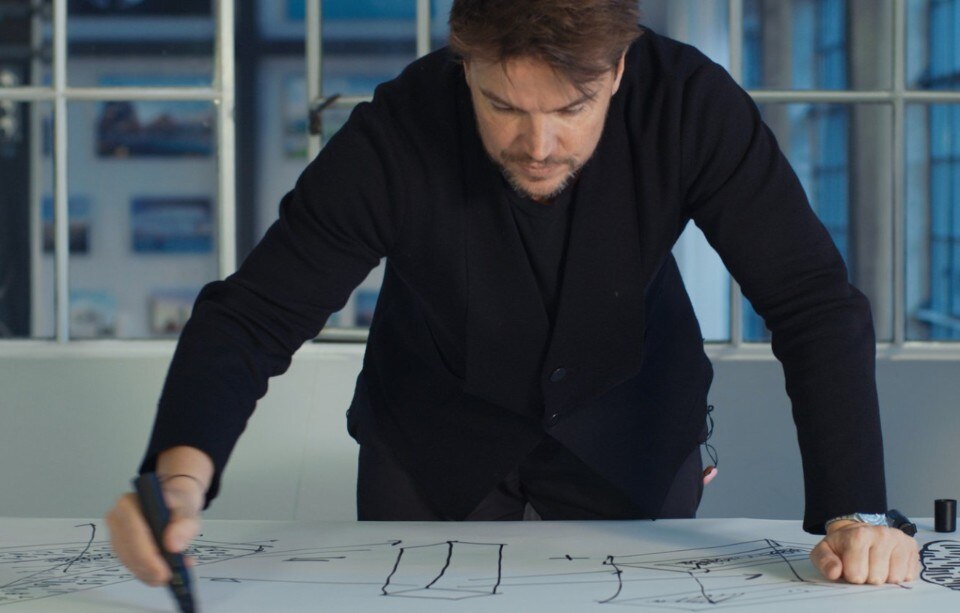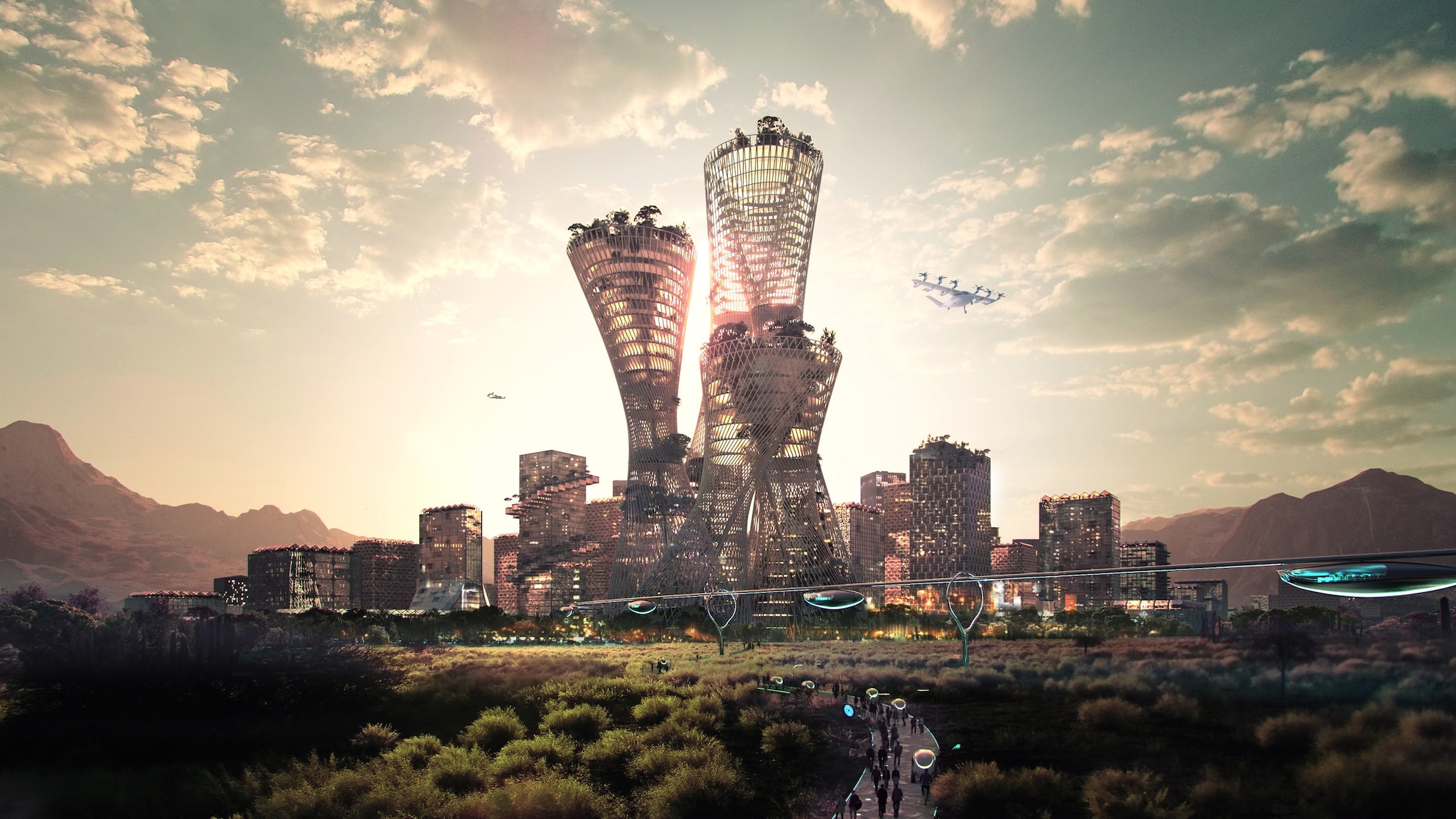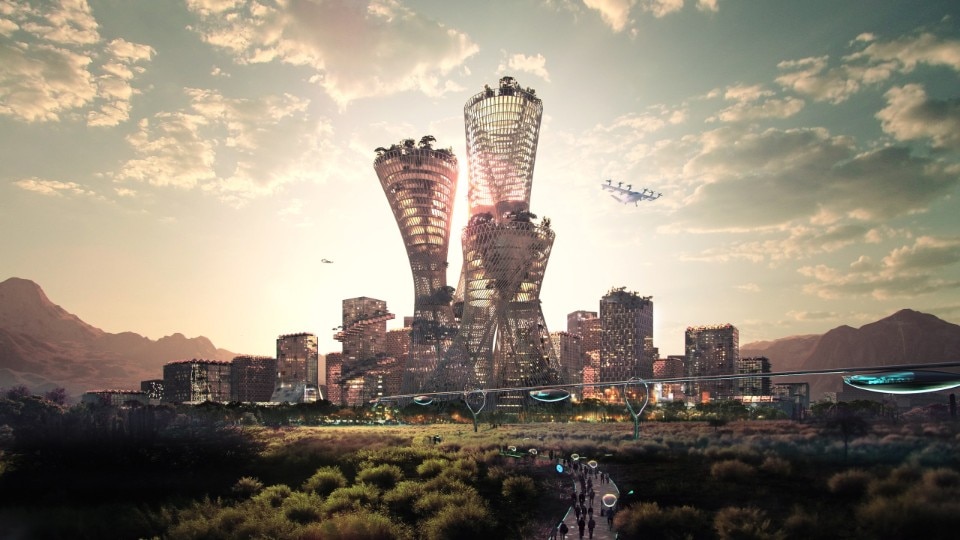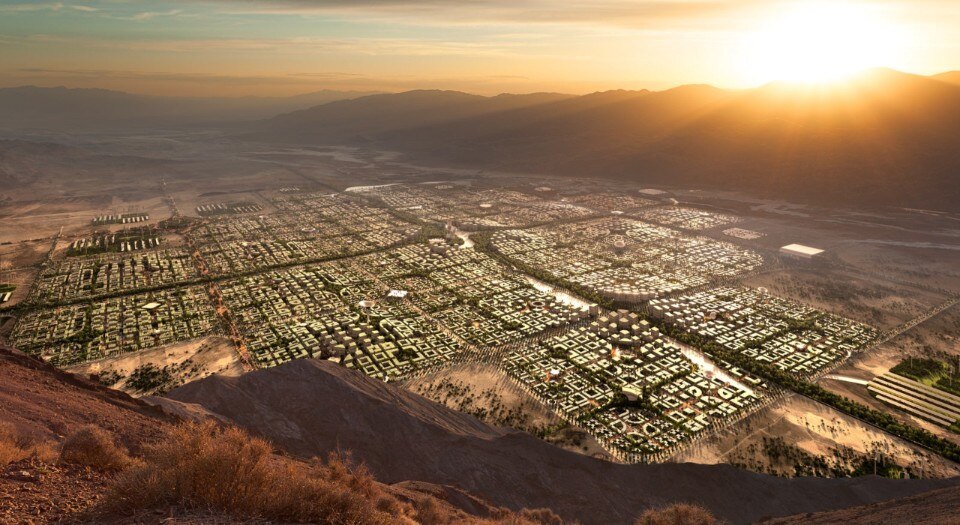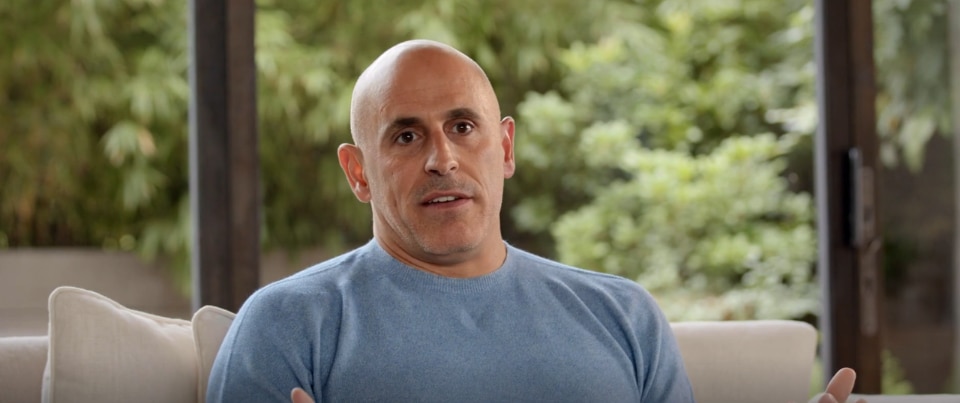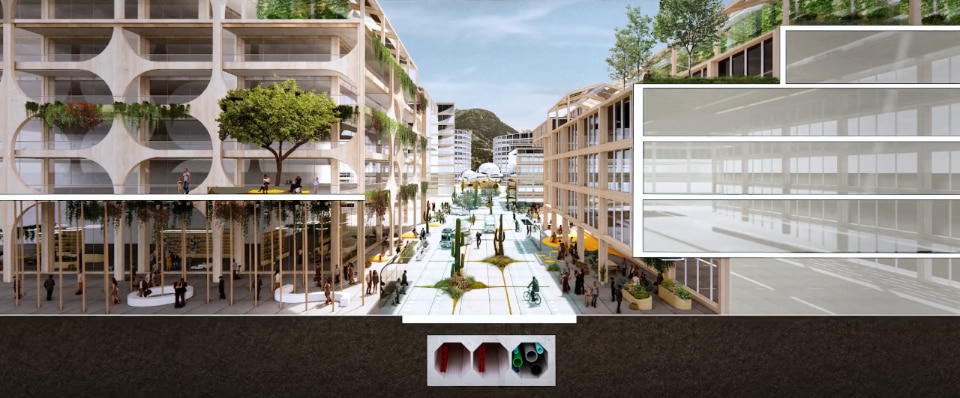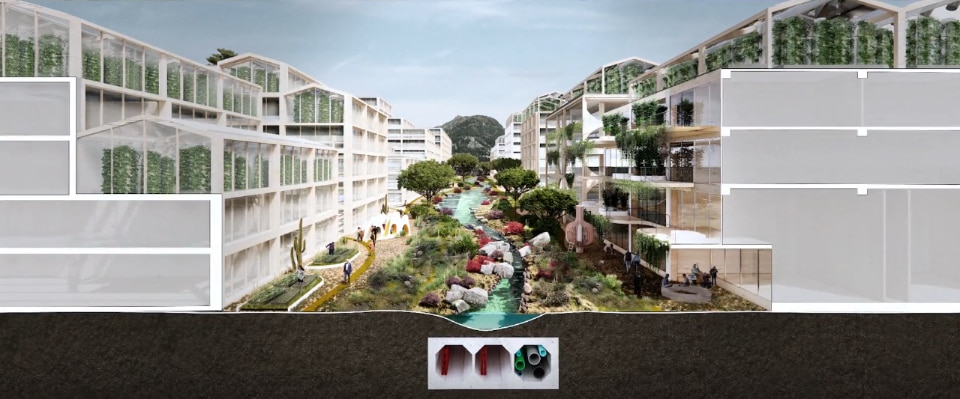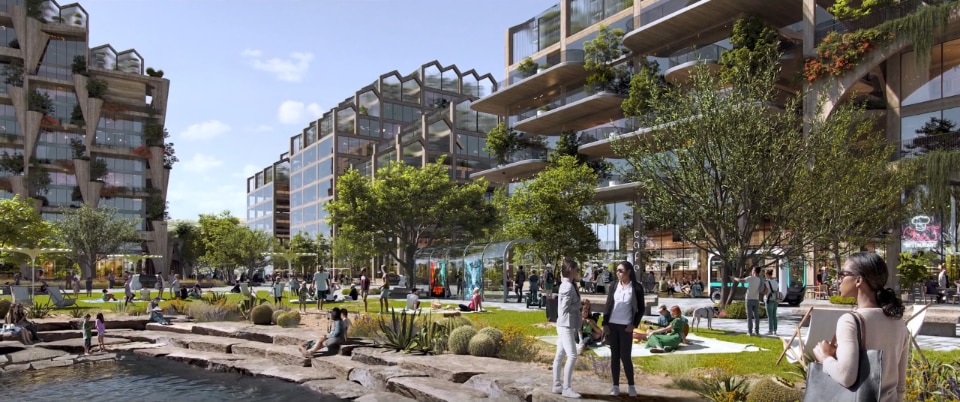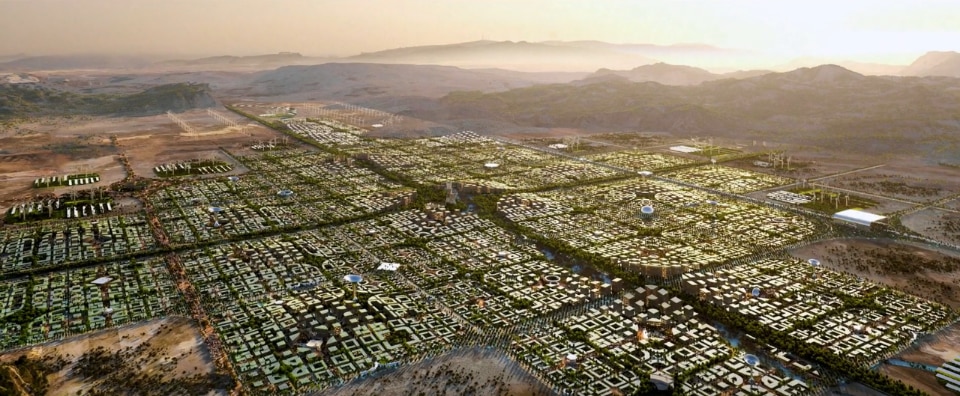A BIG smile
We met Bjarke Ingels earlier this September at Artemide’s showroom in Milan for the launch of BIG’s new lighting pieces during Design Week 2021. The occasion was perfect as he bridged from across disciplines, talking about hand-blown lamp design up to the planning of utopian cities from scratch, just right after fantasizing on gentlemanly robotic furniture. I had never met Ingels in persona before, my opinion on him was solely based on the observation of his studio’s massive architectural production over the past 15 years, on the film BIG Time, on my colleagues’ recounts, on the dozens of flattering online articles an on the Google images of this young, handsome, Danish man. He has grown up since those pictures were taken, when he founded his studio at only 32 years old (he is now 47), but his attitude has apparently remained that of a spontaneous, maybe naïve, young creative. He offered to have our conversation outside Artemide’s doors in the delightful September evening, with a glass of white wine, warm smiles and a firm, pragmatic voice: Ingles knows how to make you feel at ease. This might be reason one on why everyone wants to be around him.

Robotic offices
During the interview, made of seven short questions and seven long answers, he started describing the new lamps for Artemide the same way I saw him describing his CopenHill power plant in the film BIG Time: practical and easy to follow. “The task light looks like a children’s sketch. A single line without lifting the pen.” That’s when I ask him how much time he really spends in design projects and he replies that it’s his partner Jakob Lange who is heading the design sector, so his involvement “is more conversational than anything else”, and a big smile. For him product design is the possibility to extend the intention of a building or a space into the object that occupies it. With Lange’s team, he has been developing a furniture series for the headquarters of a company that does artificial intelligence and robotics: “You can talk to the furniture and the furniture will reconfigure as you asked. You can enter a space and say ‘auditorium!’ and all the furniture moves around and creates and auditorium setting. When you arrive the chair is like a gentleman, it accompanies you to have a sit. This will allow the building to be more hospitable,” he explains. “Remember Beauty and the Beast? With all the furniture in the bewitched castle that move around? That could somehow come true!” When I ask if that’s really going to happen, he replies that the team group working on the project is some sort of task force for extremely difficult tasks to cope with: the harder the better. Plus, he explains that all the capabilities are already there – visual and light sensors, voice recognition systems, the robots that are used in warehousing and as hosts in lobbies or for security – so it’s just a matter of putting them together. “To have effortless flexibility would make sense in many work environments,” he explains.
My electric Audi
Probably my face didn’t look 100% convinced so he reminded me that 40 years ago imagining a motorized-adjustable table would have sound useless, but today is even mandatory in certain environments. The same way robotic furniture might sound excessive today but it could make total sense tomorrow. He used his Audi electric car to make an example: “It has virtual side mirrors – a little video camera outside the car with a tv screen – at first I thought it was one more thing that you could break, but it never did, and at night or with rain or with fog, the image is crisp, and then the sensors of the car can tell you if there’s a bicycle behind you in case you haven’t seen it! I first thought it was something unnecessary but now I realize it makes total sense. It’s like when face recognition came on our phones and we thought it was useless because digiting a password wasn’t that bad but now that with masks face recognition doesn’t work pressing passwords over and over again seems useless.” In the end for Bjarke Ingels design is about giving form to the future, “giving form to something that has not yet a form, and that’s where technology becomes a great source”.
Face recognition is an opt-in
When I ask him if he doesn’t see any critical aspect about these buildings that are becoming intelligent beings, he replies that any technology can be abused, suggesting that this shouldn’t stop us from imagining the future and jumps quickly to the automotive world, that is at the forefront of this “animated world” (a curious parallel with Chris Bangle’s Inanimatti). “The car recognizes you, it adjusts the seats to your preferences, when you start accelerating it tucks you in a little bit the seat belt just to make you feel safe.” As for face recognition “it could prevent you from entering places you shouldn’t within an office building, for example, or avoiding workers to have to fumble keycards.” The example becomes extreme when it comes to face recognition within the physical shop of an online fashion brand, where with face recognition employees know already the customer’s needs and can better assist them but also they can “recognize the good ones”. “These journeys from the virtual to the actual, this idea that there is a twin world that has other possibilities than the physical world and that there is ways for these two worlds to help each other is going to be a frontier in the built environment.” What about privacy or other important legal regulations? “Is an opt-in element: you can choose. You can choose if you like the idea to be recognizable to the store, it’s not an automatic thing: I’d let the regulators do their job.”
What about Telosa?
Bjarke Ingels met businessman and entrepreneur Mark Lore (NBA owner, former Walmart’s e-commerce head after deal with Amazon and CEO of several million-worth startups) earlier this year who convinced BIG to be partner in his enormous, incredibly gigantic next step: building a utopian city from scratch branded Telosa (a name derived from the ancient Greek word used by Aristotle meaning “highest purpose” as reported on the city’s official website), following a mix of Henry George’s Progress and Poverty theories mixed with equitism for a “reformed capitalism” where land ownership is managed by a private foundation that monetizes the increasing value of the land, to later invest for the wealth and equity of the city’s society. “Some landlords that have land see the value of their land increasing without doing much for the community, that’s almost feudal.” Ingels comments. “Imagine a model where the city provides free education, free healthcare, social security and services for the citizens. So as the city grows and the value of the land grows that appreciation in value belongs to the foundation and the foundation re-invests it into improving for the quality of life of the people living there, making it more prosperous and successful and creating a cycle where the growth of the city, economically and physically also increases inclusion or equity.”
Imagine a model where the city provides free education, free healthcare, social security and services for the citizens
A city from scratch
It seems that all the right words are put in the right place, but when I ask what does it really mean to build a city from scratch he first explains the importance of starting from zero. First of all, in order to experiment new sustainable infrastructure you cannot act on an old existing one that is less effective or economically not competitive. Second, “It will offer us the best currently-known systems and technologies and philosophies on biophilia, landscape and transportation. This way we can see what a sustainable city could really be today.” Third, you can start with set up values, like a company’s vision or a mission statement. “We know what the city is all about. We know why we want to do it. Of course, we have to find how to make the first movers go there in first place: for the experiment to really work it has to become a metropolis in 30 years. By 2050 it will have 5 million people living in, ideally.” Building a city from scratch in America is not that uncommon and he reminds me of Miami – a hundred years old – or Las Vegas, a byproduct of the Hoover Dam. “Major million-people-cities came out of nowhere in the US, and maybe we can do it again! It’s an experiment that it’s worth trying.” Let’s wait and see.
Openign image: Bjarke Ingels in BIG Time, documentary by Kaspar Astrup Schröder, 2017. Screen from video


